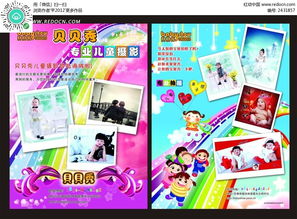Title: Designing Layouts for Children's Photography Storybooks
Creating a captivating storybook layout for children's photography involves a blend of creativity, understanding of child psychology, and visual storytelling techniques. Here's a comprehensive guide to crafting engaging layouts that capture the imagination of young readers.

Understanding the Audience
Before diving into layout design, it's crucial to understand the target audience: children. Consider their age group, interests, and cognitive development level. Tailoring the layout to resonate with their preferences and comprehension abilities is key to success.
Story Flow and Structure
1.
Storyboarding
: Start by outlining the storyline. Divide it into segments or chapters to maintain coherence and progression. Storyboarding helps visualize the flow of images and text.2.
Visual Hierarchy
: Establish a clear visual hierarchy to guide readers through the story. Larger images can indicate key moments, while smaller ones contribute to the narrative's background or details.3.
Consistency
: Maintain consistency in layout elements such as font styles, colors, and image placement throughout the storybook. Consistency fosters familiarity and enhances readability.Incorporating Text
1.
Font Selection
: Choose childfriendly fonts that are easy to read and visually appealing. Consider using playful or whimsical fonts to align with the theme of the story.2.
Text Placement
: Position text strategically, allowing sufficient space around images to avoid clutter. Ensure that text complements the visuals without overwhelming them.3.
Interactive Elements
: Integrate interactive elements like speech bubbles, sound effects, or onomatopoeia to make the story more engaging and immersive for children.Visual Elements
1.
Illustrations
: Combine photography with illustrations to add depth and visual interest to the story. Illustrations can amplify emotions, convey abstract concepts, or highlight specific narrative elements.2.
Color Palette
: Select a vibrant and stimulating color palette to evoke positive emotions and maintain children's interest. Use colors strategically to enhance mood and convey the story's tone.3.
Whitespace
: Embrace whitespace to create breathing room within the layout. Adequate whitespace around images and text enhances visual clarity and prevents visual overload.Interactive Features
1.
Texture and Touch
: Incorporate textured elements or interactive flaps that children can touch and explore. Tactile experiences enhance sensory engagement and encourage active participation.2.
Hidden Surprises
: Add hidden surprises or Easter eggs throughout the storybook to delight young readers and encourage them to revisit the book multiple times.3.
Augmented Reality (AR)
: Explore innovative technologies like AR to bring the story to life through interactive digital experiences. AR can bridge the gap between the physical book and digital content, offering a dynamic storytelling platform.Accessibility and Inclusivity
1.
Diverse Representation
: Ensure representation and inclusivity in both imagery and storytelling. Feature diverse characters, backgrounds, and experiences to reflect the real world and promote empathy and understanding.2.
Text Readability
: Pay attention to text readability for children with varying literacy levels or visual impairments. Use clear fonts and adequate contrast to facilitate easy reading.3.
Language Options
: Consider offering multiple language options to cater to a diverse audience and promote language learning and cultural appreciation.Conclusion
Designing layouts for children's photography storybooks requires a thoughtful approach that prioritizes storytelling, visual appeal, and childfriendly elements. By understanding the audience, structuring the story effectively, and incorporating interactive features, you can create immersive and memorable reading experiences for young readers. Embrace creativity, empathy, and inclusivity to craft storybooks that inspire imagination and curiosity in children of all backgrounds and abilities.
I structured the content with headings and subheadings to make it easier to navigate and comprehend. Let me know if you need any adjustments!










